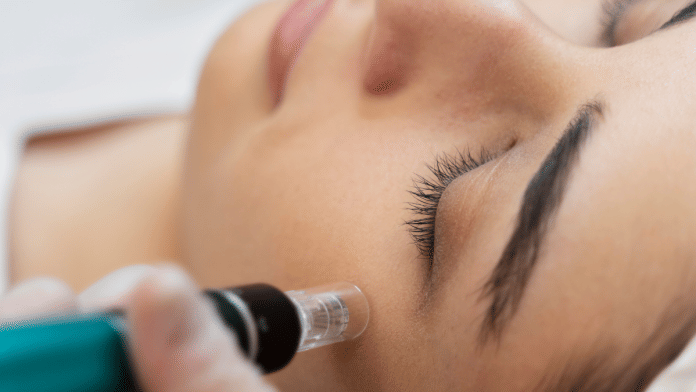From contouring the face to smoothing out wrinkles, injectable treatment can truly transform your skin. But how do these dermal fillers impact your skincare routine? While pre-and post-injectable care isn’t too complicated, keeping certain things in mind can help maximise benefits.
Getting started
Before going for dermal fillers, you must consult a qualified practitioner who assesses your goals and advises you on suitable options.
There are several types of injectable dermal fillers commonly used in dermatology and cosmetic procedures. These injectables are primarily used to reduce wrinkles, add volume, and improve the overall appearance of the skin. Here are the main types:
Hyaluronic Acid Fillers
HA fillers are composed of hyaluronic acid, a substance naturally found in the skin that helps to retain moisture and add volume.
These fillers are versatile and can be used to treat fine lines, wrinkles, and add volume to lips and cheeks.
Calcium Hydroxylapatite Fillers
Dermal fillers contain calcium hydroxylapatite, a mineral-like compound found naturally in human bones. CaHA fillers stimulate collagen production and provide longer-lasting results compared to HA fillers.
Poly-L-lactic Acid Fillers
PLLA is a biodegradable synthetic substance that stimulates collagen production over time. It is used to treat deeper facial wrinkles and restore facial volume lost due to aging.
Polymethyl-methacrylate Fillers
PMMA fillers contain tiny microspheres that provide permanent support for facial tissues and are not absorbed by the body. They are used to get rid of deep wrinkles, acne scars, and treat areas needing volume enhancement.
Botulinum Toxin
Though not a filler, botulinum toxin (botox) injections temporarily paralyse facial muscles to reduce the appearance of wrinkles caused by muscle contractions. The causative organism, clostridium botulinum, is a heat resistant bacteria found in the environment, unlike the previously mentioned fillers, which are synthetically produced.
Botox is used primarily for dynamic wrinkles-–wrinkles caused by muscle movement—such as crow’s feet and forehead lines.
Also read: Botox and fillers aren’t the same. Pro tips on what goes where on your face
What to choose?
Injectables vary in their composition, longevity, and specific uses. The choice of filler depends on the area being treated, the desired longevity of results, and individual patient factors.
Depending on the type of filler and your skin sensitivity, you may be advised to avoid medications such as aspirin, which can increase chances of bruising. The practitioner will examine your skin to determine the best placement of fillers and the amount needed to achieve what you are looking for. You should have a clear understanding of what to expect from the procedure, including possible side effects and downtime.
You may notice immediate results after the treatment, but be prepared for initial swelling or bruising, which should subside in a few days. Your practitioner might recommend specific aftercare instructions, such as avoiding strenuous exercise, excessive sun exposure, or certain medications.
The longevity of results depends on the type of filler injected and can vary from several months to over a year. Maintenance treatments may be recommended to prolong the effects.
Potential side effects can include temporary redness, swelling, bruising, or in rare cases, more serious complications like infection or allergic reactions.
Also read: Glutathione injection can repair skin, reduce pigmentation. But it impacts your kidney
Dos and don’ts
Before the filler:
There may be some level of bruising, so it’s best to plan social obligations accordingly. You might have to avoid public spaces during your healing time.
Blood-thinning medicines such as aspirin, enoxaparin, and warfarin, are best avoided to limit bruising. Alcohol should be avoided 24 hours before and after getting a filler, as it has blood-thinning qualities too. The same goes for green tea.
In case you have an active infection, it is best to delay your filler. Getting a filler while battling a virus increases the chances of a superadded infection.
After the filler:
Hydration is key to making a filler last longer. Fillers are hygroscopic in nature so a well-nourished body results in a longer-lasting filler.
It is advised to take nutritional Vitamin C, up to 2000 mg, immediately after the procedure to prevent bruises.
Avoid extreme weather at all costs. If you’re considering botox, it’s important to avoid jerky movements, massages or facials due to the neurotoxic nature of the treatment.
Don’t use retinols, Vitamin C serums or oil-based makeup upto 24 hours after getting an injectable. Light, oil-free foundation to hide bruising will do no harm though. And, as with any other medical treatment, if you see any lumps or excessive bruising or generalised symptoms of an infection, do check with your doctor.
Dr Deepali Bhardwaj is a Consultant Dermatologist, Max Hospital, Saket. She is also an anti-allergy specialist, laser surgeon and internationally trained aesthetician. She tweets @dermatdoc. Views are personal.
(Edited by Aamaan Alam Khan)







Eye opener . Detail information
Thanx
It’s awesome info Dr. Deepali mam